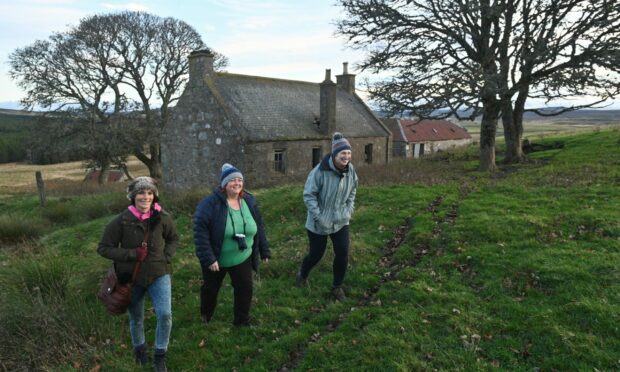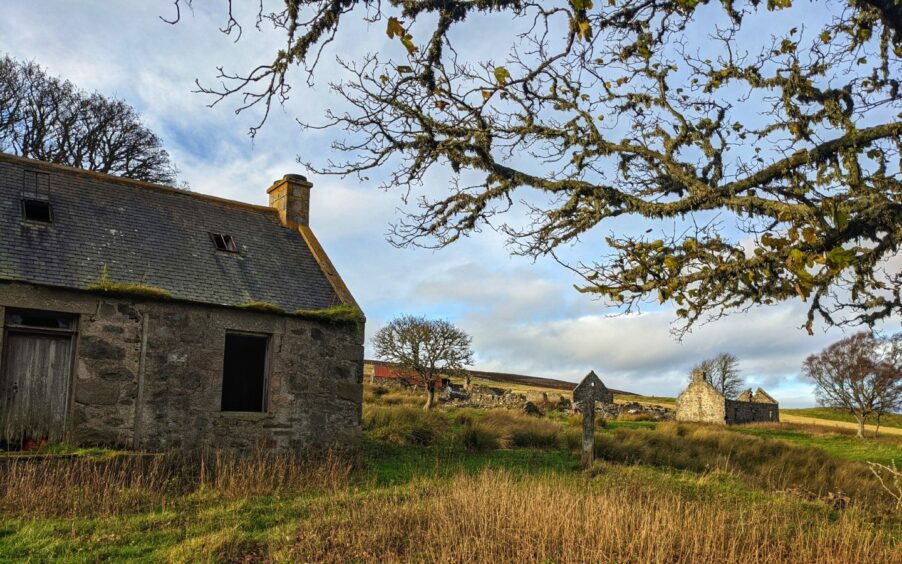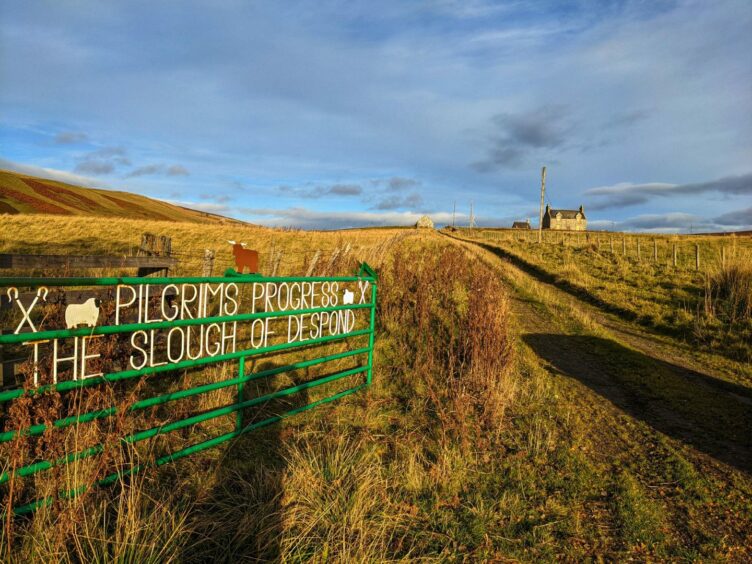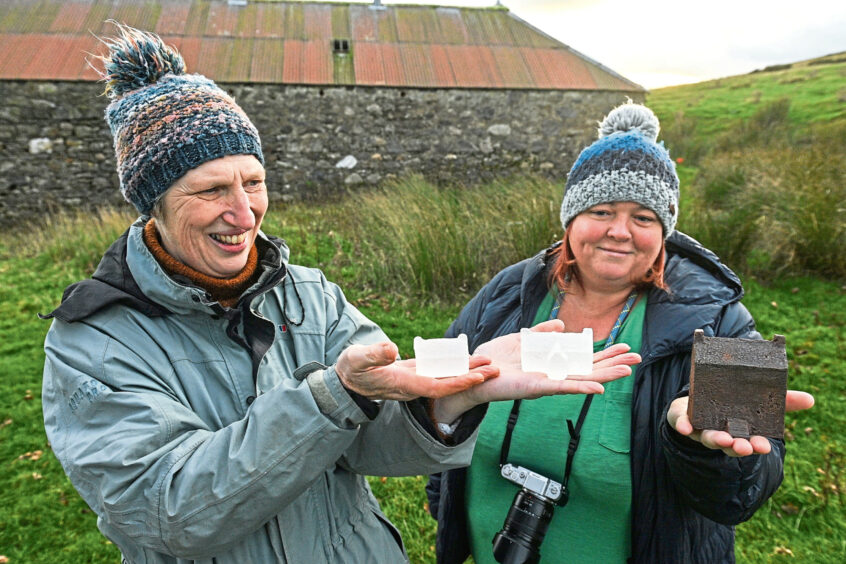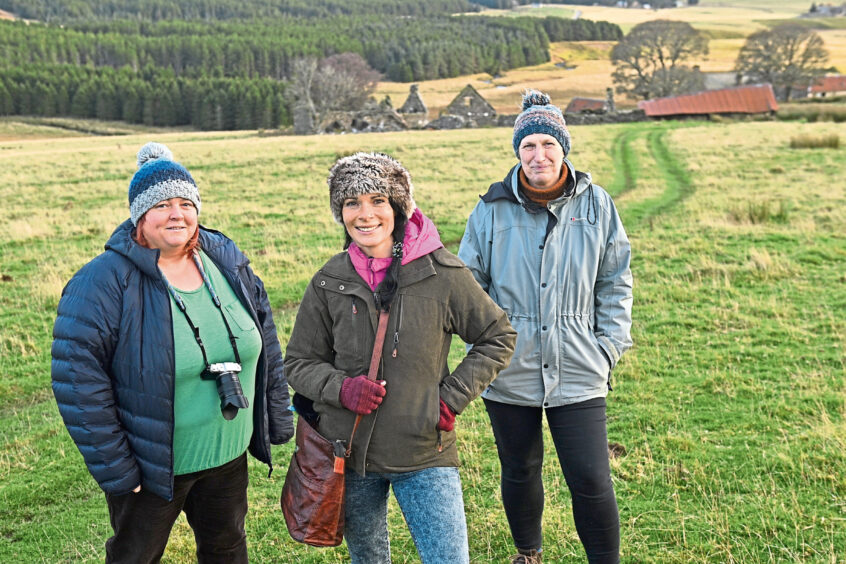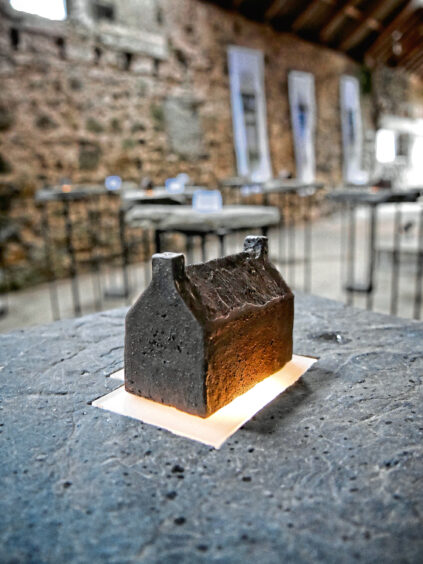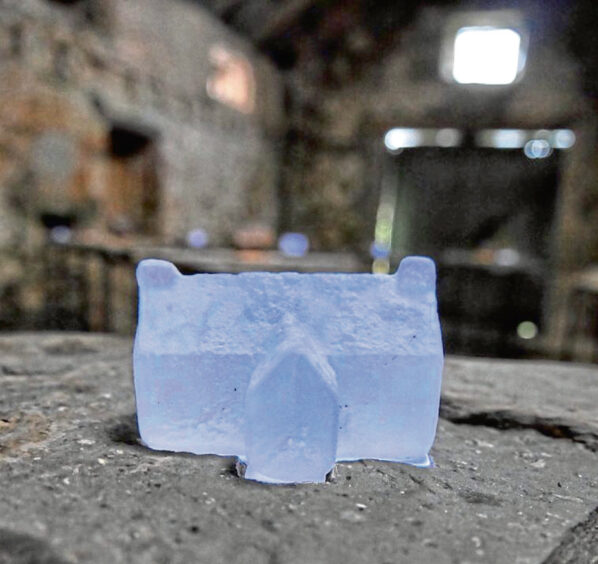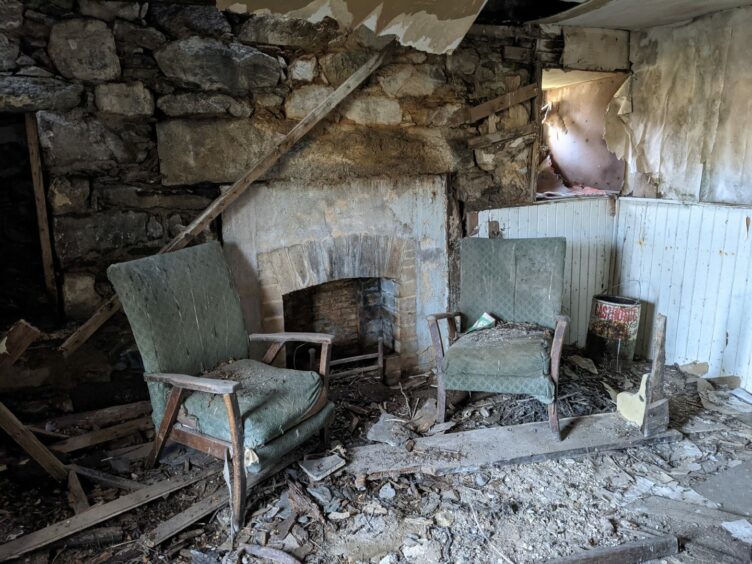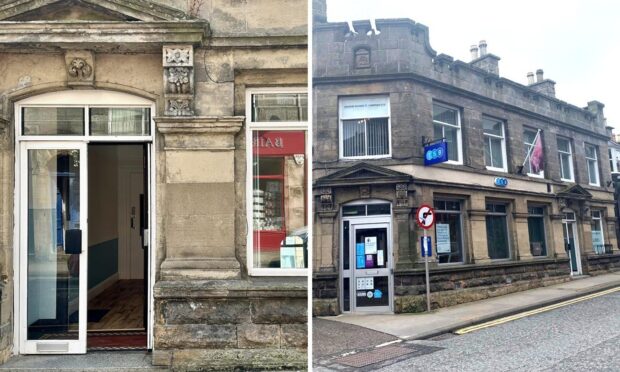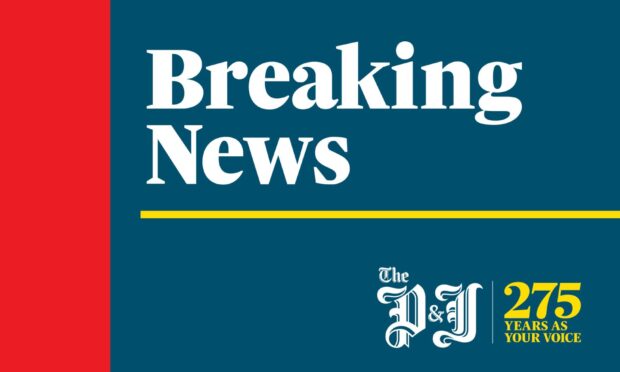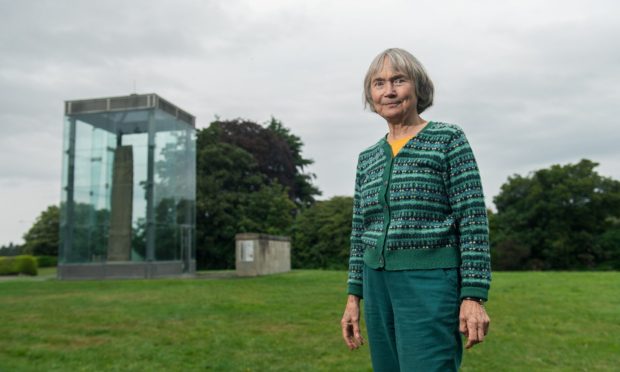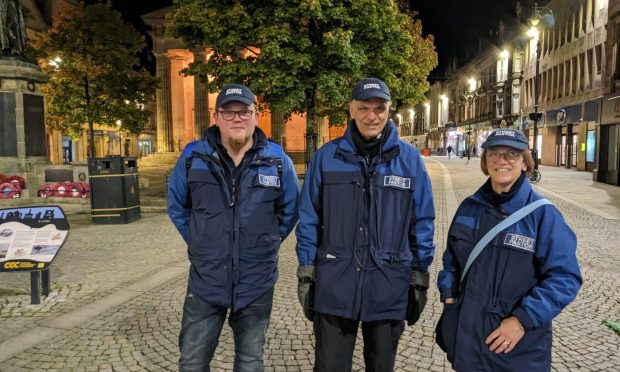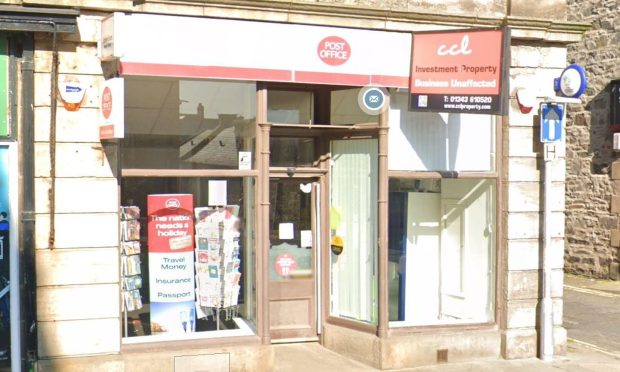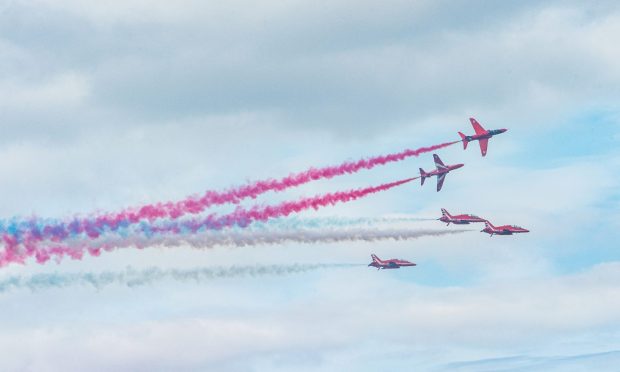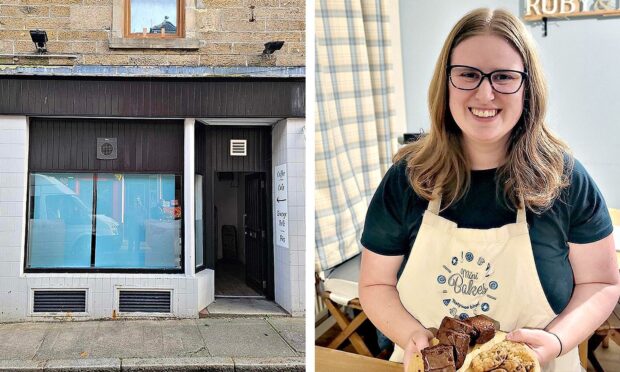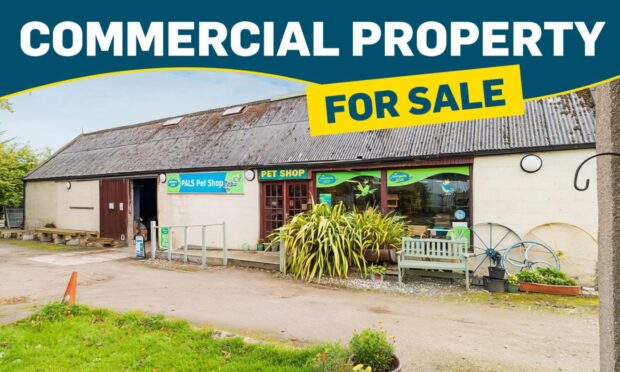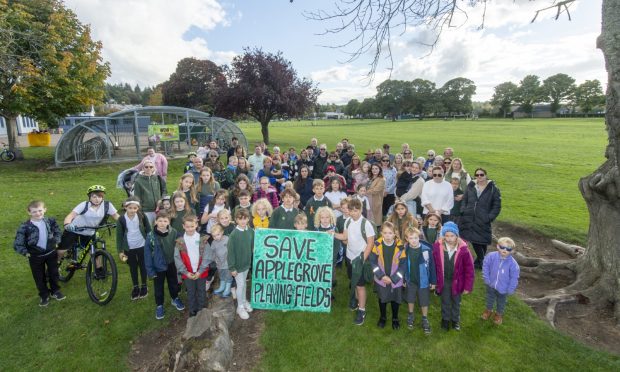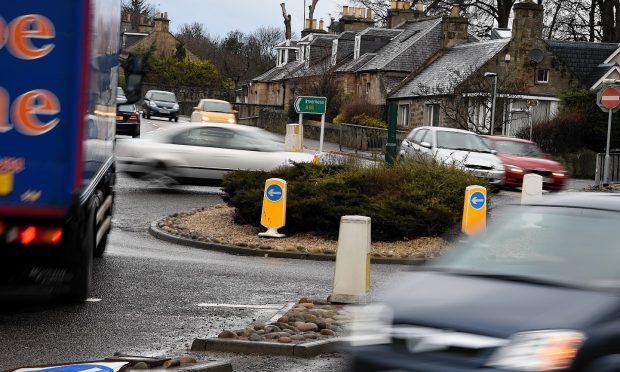Gayle Ritchie meets the Moray-based artists behind a project which explores the remote, desolate beauty of the Cabrach.
Ragged curtains swish and flap in the breeze. A door swings back and forth on rusty hinges. Inside the derelict farmhouse, two armchairs splashed with bird droppings face each other in front of a fireplace.
It’s a strangely serene and evocative scene, as if two people are about to pop in for a seat and a blether.
The house is among dozens of deserted buildings dotted around the Cabrach, a vast, scarcely populated and desolately beautiful stretch of land on the northernmost fringes of the Cairngorms.
At one time, the community had a thriving population of around 1,000, but today only around 70 people call the Cabrach home.
The Cabrach was deemed an area where only the tough belonged and in the mid-19th Century an account described it as “so wildly desolate and inhospitably barren that nothing but the firmest nerve, urged by dire necessity, could ever induce a human being to traverse it”.
A huge proportion of young men from the Cabrach’s farming community died when they went to fight in the First World War. Others, who for years had supplemented their meagre incomes with the production of illicit whisky, hiding stills in the folds of hills and carrying out a brisk trade with passing drovers, moved away with the legalisation of distilling.
Today, the past lives on in this depopulated community in the form of empty farmhouses and rusting farm implements.
The Cabrach was a deeply religious area, and anyone who has ventured into its enveloping wilderness will have spotted the farmhouse of Auchmair – now boarded up – and its iconic wrought-iron gates fashioned with the words “Pilgrims Progress: The Slough of Despond” in reference to John Bunyan’s allegory in which protagonist Christian sinks into a bog, weighted by guilt for his sins.
Reconnections
During the summer, Moray artists Mary Bourne and Lynne Strachan got together to explore the Cabrach, having long been fascinated by it.
They walked on foot alone, together and guided by people with local knowledge.
They learned a lot about the history of the Cabrach and its people, about why they left, and what they left behind.
Their findings formed part of an ongoing project, Cabrach Reconnections, which develops ways for people to reconnect with each other through art and encourages them to enjoy and discover the area’s stunning scenery and histories.
With support from Creative Scotland, the duo organised jewellery and metal casting workshops, photography and sketching walks. They then developed a body of artwork in response to what they had learned, and exhibited it across Moray.
I met with Lynne and Mary on a walk to Torniechelt, the abandoned farmhouse with a scattering of ramshackle outbuildings. The remains of a corrugated iron roof rattled in the breeze while wind whistled down a chimney. It’s a haunting spot.
“We spoke to a lady who grew up here and she remembers her experiences with great excitement,” says Mary.
“There’s a strong feeling among people that they want their memories and ways of life to be recorded.”
The arts project was influenced by materials that were left behind by people who used to live in the area – materials which are slowly being reclaimed by nature – as well as by personal items which were carried away when they left.
“We’ve been experimenting with fabrics, glass, cast iron, copper and silver to develop works that will hopefully bring renewed attention to areas that have been lost or forgotten,” says Elgin-based visual artist Lynne.
“We created models of cast iron houses at the Scottish Sculpture Workshop in Lumsden, and at North Lands Creative Studio near Wick we made glass ‘ghost houses’ which we light up underneath.”
The artists also built “sound sculptures” which release sounds of nature when touched, and worked with a silversmith in Banff to create Cabrach-inspired jewellery.
“Windows became really important to us,” reveals Mary, who lives at Milltown of Auchindoun, studied sculpture at Edinburgh College of Art and was elected an Academician of The Royal Scottish Academy in 2012.
“People told us they used to look out their windows and feel reassured when they saw the lights of their neighbours’ houses. That inspired us to create these ‘ghost houses’. There’s the feeling you’re seeing the same view out the window as people from the past; you identify with them in seeing what they saw.”
Some of the abandoned buildings still house remnants of the past – curtains hang in windows, floating backwards and forwards in the wind.
Mary and Lynne took photos of such windows – some of which still have glass – and printed the images on to cotton banners.
“When we exhibited at Inverharroch Steading, it was quite draughty and they moved nicely, like the remnants of curtains in old buildings,” says Mary.
Left behind
Another thing that fascinates the artists is that the Cabrach wasn’t ever “tidied up”.
“Everything they’ve left behind is just left; nobody’s come along and sorted it out,” muses Mary.
“You can almost see indentations where someone has slept on a bed for 50 years. It’s like seeing history first-hand; it’s not been filtered or interpreted or presented. It’s a feeling of immediate contact with the past.”
Lynne and Mary hope their project will promote the Cabrach and its stories further afield.
- Cabrach Reconnections will host an exhibition at Leith’s Custom House from January 29 to February 6. facebook.com/cabrachreconnections
